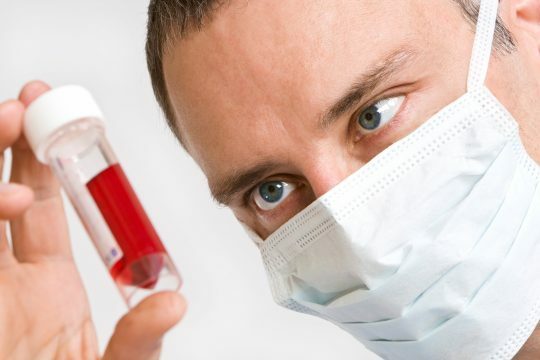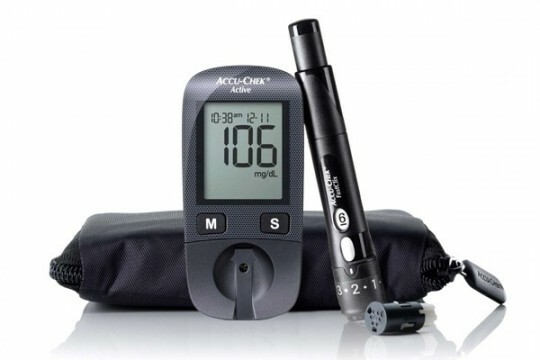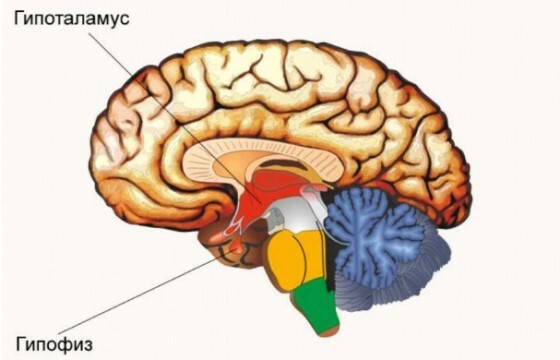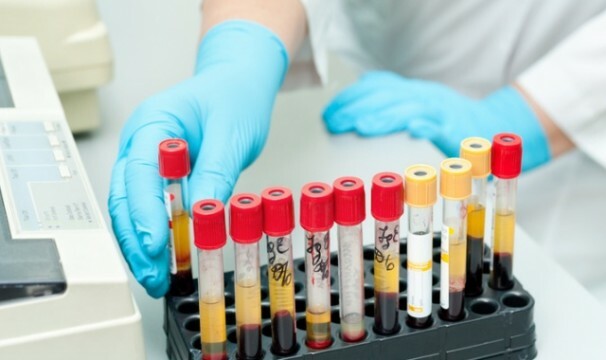Sugar in the blood can, both rise and fall, is a factor of internal and external nature. The main reason for its sharp increase is a large number of sweets, the impact of stressful situations on the body, predisposition. If the first signs of an increase in glucose show up, you need to contact a doctor - an endocrinologist to diagnose or rule out diabetes, because the disease contributes to a sharp drop, or increases sugar, leads to a negative effect. Also, the cause of the increase may be a psychological factor or temporary physical exertion.
Why the sugar jumps occur

The main symptom for a sharp jump in glucose is caused by its deviation from the norm and the ability of insulin to deliver glucose to the cells for the subsequent energy it generates. This leads to feelings of weakness and fatigue in the body.
The causes of the drop in blood glucose levels are as follows:
- changes, manifested for a short period of time at the physiological level( psychological, stressful state);
- viruses and infections that increase temperature;
- convulsive conditions and epileptic seizures;
- during a sudden failure of the hormonal background or when hormones are disrupted.
If we consider diabetes in a sick person, sudden changes in sugar directly depend on the fact that insulin can not recognize glucose. Insulin in a healthy person is able to recognize it, then why is there a rapid decline? This factor depends on the imbalance. If a person eats sweets, more laid, his intoxication occurs. Recognize it and adjust it yourself.
Symptoms of increasing blood sugar are:
- External indicators - the oral mucosa dries up, there is a regular desire to drink, often you want to go to the toilet, the volume of the emerging urine rises. These symptoms indicate an increased need for a liquid, so there is a disruption of the kidneys. If the condition is pathological, then the thirst will not be satisfied. This can be done by restoring the glucose level.
- Skin covers pale - this is due to a violation of the circulatory system. The skin becomes sensitive, the healing of the wounds takes a long time, the skin itching irritates it.
- Decreased capacity, fatigue appears, the state is sluggish and sleepy. This is due to the fact that glucose does not enter cells inside, but is located in the blood. Therefore, the body does not receive the necessary energy.
- The state of nausea, increasing in the intervals between eating food.
- Possible causeless vomiting.
- The weight of the body decreases rapidly. With insulin deficiency, energy is not produced. Then the body takes strength from muscle tissue and fat cells. Man always wants to eat.
- Sometimes vision is reduced, headaches.
- For a long period of time, the wounds and cuts are tightened.
These symptoms are associated with the action of inulin. If glucose is increased, then it is not enough, so the energy is produced slowed down or ceases to be produced at all.
If the sugar in the blood has increased, as a late symptom, there are disorders of the nervous system, weight loss, activity, brain work is disrupted, attention to others is lost, memory is deteriorating.
What you need to do with increased sugar

The first thing you need to do when you discover increased sugar, is to sit on a therapeutic diet. The diet is aimed at reducing the amount of sugar in the blood. It declines after the intake of digestible carbohydrates with food has decreased in the diet.
Food intake rules aimed at reducing sugar:
- Patients who are overweight should reduce the calories of food consumed.
- Therapeutic diet is directed to a meal, balanced by fats, proteins and carbohydrates.
- Eat foods, with a slow digestibility of carbohydrates.
- Portions should be small, eat an average of 6 times a day.
- Calories by quantity should not exceed energy costs.
- Eat vegetables and fruits, low-fat dairy products.
- Drink plenty of water to maintain the body's imbalance.
- It is necessary to refuse alcoholic beverages, bakery products.
Diabetes mellitus is slow. Type 1 disease will manifest itself months later, after recovery from a viral infection. Diabetes mellitus of this type is often observed in children who previously had a persistent infection of a viral nature. In this case, increased glucose in the urine and blood is difficult enough, also in the urine there is acetone and develops a precomatous and coma. If a person has been provided with timely assistance, and the doctor has prescribed the necessary dose of insulin, the diabetes mellitus will continue to flow without complications throughout life.
An invisible beginning and with type 2 diabetes. Its development falls on the age of a person after 45 years. The first symptoms of this type are all kinds of infections, abscesses, fungus, skin diseases, infections of the genitourinary system. With diabetes mellitus, metabolism is disrupted, and the immune system suffers further. People who are 45 years of age or older take a blood test for sugar. Often in the blood and urine, the presence of glucose is greater than normal. In diabetes mellitus of this type, the symptoms may not be expressed. A person can not notice them - this is sufficient intake in the liquid, significant volume when urinating. Even when the patient is well, it is necessary to diagnose diabetes mellitus. Because of the non-treatment of diabetes, it ends with a diabetic coma. Also, it can be severe complications of other organs and tissues of the body.
Rapid increase in sugar in diabetes mellitus
If you do not correct and take corrective measures in time, increased glucose contributes to the appearance of a diabetic coma. Coma develops slowly. In patients of type 1, it is a ketoacidotic coma, and in type 2, hyperosmolar coma.
Symptoms at type 1
The course of ketoacidotic coma is observed in the contained increased sugar 15-16 mmol / l, its release with urine on average 50 g / l, appears in urine acetone, metabolic acidosis develops. In the initial stages of type 1, the body compensates for these disorders, then the following symptoms are manifested: weakness in the body, a drowsy state, thirst accompanied by a large intake of fluid, a significant volume of urine is released. In time, without helping a person, vomiting may open, he vomits, he swears, pains in the abdomen are felt, with exhalation acetone is felt, deep breathing becomes( so, excess carbon dioxide and acidity go away).Skin covers are dry, there is a large loss of fluid simultaneously with sugar. Then the patient has a loss of understanding and coma.
Symptoms of type 2

In type 2 diabetes mellitus, there is a delayed development of hyperosmolar coma, for 7-14 days. In the blood sugar jumps, reaching a dangerous mark - 50-55 mmol / l and higher and comes out with urine. Since its large amount is allocated, dehydration of the organism occurs, which is a continuation of the coma. A man is constantly thirsty, he consumes a lot of liquid and therefore repeatedly visits the bathroom. Then there are symptoms such as weakness in the body, lethargy, you want to sleep. Vomiting and nausea, and pain in the abdomen do not occur. Obvious signs of dehydration of type 2 in diabetes mellitus are very noticeable - the skin is dry to the touch, facial features are pointed, eyes are sunken, the patient often breathes, acetone is not felt. If you do not provide medical help, an acute form of kidney failure develops, this leads to loss of understanding and coma.
In the event of coma, urgent hospitalization and resuscitation are needed.
Diabetes mellitus is a disease that requires constant monitoring. Therefore, people who have this disease control glucose levels with a glucometer.
If the initial manifestations of diabetes do nothing and do not enter the hormone into the body, the sugar in the blood springs and can quickly reach 21 units. For people with diabetes, this indicator is dangerous, you should immediately seek help from doctors, they will eliminate the factor that caused disorders in the body.
How to bring blood sugar to the norm
If sugar has increased by more than 21 units, the help of medical workers is necessary, it is also necessary to revise the consumed food. Perhaps a sharp jump in sugar is associated with the use of unhealthy food. In addition, it is necessary to lower glucose at inflated rates. Lower the glucose to normal, you can low - carbohydrate diet. If a person has a jump in glucose in diabetes mellitus, another diet will not help him.
What should I do when the indicator of 21 units is dangerous to the patient? After examining and receiving the results of the tests, the doctor will prescribe medications and a diet that will lower the glucose to normal. If you stick to a low-carb diet, then the condition of the patient with diabetes mellitus will improve, regardless of the complications observed in the patient. The condition is normalized 3 days after the change of power. This helps reduce glucose to a low level and does not allow the development of other diseases that accompany diabetes mellitus.
Why the sugar grows
Increases occur during pregnancy, stress, psychological experiences, various concomitant diseases. When the glucose level reaches 21 units - this is a signal to increase attention to well-being. Sugar often rises sharply, with violations in the process of processed carbohydrates.
Reasons for increasing sugar to 21 units in the following:
- improper diet( sugar level, always increases after eating food due to its active processing);
- physical exercises are absent( the exercise favorably affects glucose);
- emotional state( during stresses, indicators may vary);
- changes in the hormonal background( during menstruation and menopause, in the body of a woman, the glucose level rises).
Also, sugar increases with various health disorders( with the affected organ).
- Disorders of the endocrine system, when abnormalities occur in the hormone produced, leads to diabetes mellitus, thyrotoxicosis, pheochromocytoma.
- Diseases in the pancreas( various tumors, pancreatitis), contribute to a decrease in the production of insulin, there is a metabolic disorder.
- Drug consumption causes an increase in glucose.
- Liver disease, it has a supply of glucose, during breakdowns there is a rise in sugar. Further, the disease - cirrhosis, all kinds of tumor formations, hepatitis.
All that is necessary for the patient, with increased sugar, is to eliminate the causes that disturb the body.
What to do when the glucose level of
has increased When sugar has risen, restore the blood formula, based on the activities that need to be carried out. Allow the decline or vice versa, sugar cane. It is necessary to know how its action takes place in the circulatory system. When it is contained in the norm, then insulin fulfills its purpose, and glucose becomes suitable. During the rapid decline and growth of glucose, insulin does not perform the proper function. First of all, at its fall, eat sweet, and when you raise, you should seek help from doctors. When the presence of symptoms is in the number of 2 or 3, you should consult a therapist and then go to the endocrinologist.
If the glucose is overestimated, internal organs are examined( this is ultrasound, histological analysis), and the presence of diabetes is sought. When an ailment is not associated with pathology, then a person talks about the diet and is sent home for treatment. At home, it will be necessary to brew teas, the basis of which is natural herbs, which help reduce sugar. Perhaps, and the appointment of medications, with the re-emergence of hyperglycemia. Distortions of the glucose norm can be observed in women in the situation, people who have mental and physical activity.



